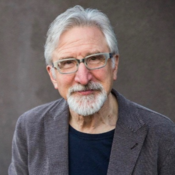- New
-
Topics
- All Categories
- Metaphysics and Epistemology
- Value Theory
- Science, Logic, and Mathematics
- Science, Logic, and Mathematics
- Logic and Philosophy of Logic
- Philosophy of Biology
- Philosophy of Cognitive Science
- Philosophy of Computing and Information
- Philosophy of Mathematics
- Philosophy of Physical Science
- Philosophy of Social Science
- Philosophy of Probability
- General Philosophy of Science
- Philosophy of Science, Misc
- History of Western Philosophy
- Philosophical Traditions
- Philosophy, Misc
- Other Academic Areas
- Journals
- Submit material
- More
Perceptual consciousness overflows cognitive access
Trends in Cognitive Sciences 15 (12):567-575 (2011)
Abstract
One of the most important issues concerning the foundations ofconscious perception centerson thequestion of whether perceptual consciousness is rich or sparse. The overflow argument uses a form of ‘iconic memory’ toarguethatperceptual consciousnessisricher (i.e.,has a higher capacity) than cognitive access: when observing a complex scene we are conscious of more than we can report or think about. Recently, the overflow argumenthas been challenged both empirically and conceptually. This paper reviews the controversy, arguing that proponents of sparse perception are committed to the postulation of (i) a peculiar kind of generic conscious representation that has no independent rationale and (ii) an unmotivated form of unconscious representation that in some cases conflicts with what we know about unconscious representation.Author's Profile
My notes
Similar books and articles
Consciousness and cognitive access.Ned Block - 2008 - Proceedings of the Aristotelian Society 108 (1pt3):289-317.
Perception and Iconic Memory: What Sperling Doesn't Show.Ian B. Phillips - 2011 - Mind and Language 26 (4):381-411.
Consciousness, Accessibility, and the Mesh between Psychology and Neuroscience.Ned Block - 2007 - Behavioral and Brain Sciences 30 (5):481--548.
Comments on Ned Block's target article “Consciousness, accessibility, and the mesh between psychology and neuroscience”. [REVIEW]Katalin Balog - 2007 - Behavioral and Brain Sciences 30 (4):499-500.
Does phenomenology overflow access?Neil Levy - 2008 - Journal of Consciousness Studies 15 (7):29-38.
Attention, Visual Consciousness and Indeterminacy.James Stazicker - 2011 - Mind and Language 26 (2):156-184.
Unconscious subjectivity.Joseph U. Neisser - 2006 - PSYCHE: An Interdisciplinary Journal of Research On Consciousness 12.
Inductive parsimony and the Methodological Argument.Carolyn Suchy-Dicey - 2012 - Consciousness and Cognition 21 (2):605-609.
Phenomenal consciousness, attention and accessibility.Tobias Schlicht - 2012 - Phenomenology and the Cognitive Sciences 11 (3):309-334.
When is perception conscious?Jesse J. Prinz - 2010 - In Bence Nanay (ed.), Perceiving the World. Oxford University Press. pp. 310--332.
Representation and a science of consciousness.Andrew R. Bailey - 2007 - Journal of Consciousness Studies 14 (1):62-76.
Perceptual Representation / Perceptual Content.Bence Nanay - 2015 - In Mohan Matthen (ed.), Oxford Handbook for the Philosophy of Perception. Oxford University Press. pp. 153-167.
Analytics
Added to PP
2011-11-21
Downloads
4,063 (#1,503)
6 months
318 (#6,712)
2011-11-21
Downloads
4,063 (#1,503)
6 months
318 (#6,712)
Historical graph of downloads
Author's Profile
Citations of this work
Materialism and the Moral Status of Animals.Jonathan Birch - 2022 - Philosophical Quarterly 72 (4):795-815.
Rich conscious perception outside focal attention.Ned Block - 2014 - Trends in Cognitive Sciences 18 (9):445-447.
The Grain of Vision and the Grain of Attention.Ned Block - 2012 - Thought: A Journal of Philosophy 1 (3):170-184.
Everything and More: The Prospects of Whole Brain Emulation.Eric Mandelbaum - 2022 - Journal of Philosophy 119 (8):444-459.
References found in this work
On a confusion about a function of consciousness.Ned Block - 1995 - Brain and Behavioral Sciences 18 (2):227-–247.
A sensorimotor account of vision and visual consciousness.J. Kevin O’Regan & Alva Noë - 2001 - Behavioral and Brain Sciences 24 (5):883-917.
Consciousness, Accessibility, and the Mesh between Psychology and Neuroscience.Ned Block - 2007 - Behavioral and Brain Sciences 30 (5):481--548.
Conscious, preconscious, and subliminal processing: A testable taxonomy.Stanislas Dehaene, Jean-Pierre Changeux, Lionel Naccache, Jérôme Sackur & Claire Sergent - 2006 - Trends in Cognitive Sciences 10 (5):204-211.
The information available in visual presentations.George Sperling - 1960 - Psychological Monographs 74:1-29.


